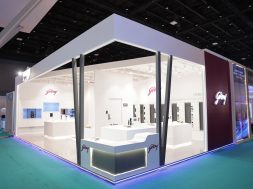Aluminium – Redefining the future of the transport industry

Mr. Naveen Mehta – President, Operations – Jindal Aluminium speaks about Aluminium’s contribution to the creation of several critical components that are redefining the transport industry.
As a metal that allows movement at quicker speeds, over land, seas, in the sky and now even space, the consumption of aluminium alloys has grown tremendously. It now accounts for 27% of the transport industry’s metal consumption. As the global vision towards climate action takes shape, aluminium is ushering in a reduction in carbon footprint and costs while playing a bigger role in the future of the transport industry going green.
Historically, the metal has had linkages with the automobile industry for over 100 years beginning with the first sports car featuring an aluminium body being showcased at the 1899 Berlin International Motor Show. While the bulk of aluminium’s real potential was not truly discovered earlier on, and hence picked on slowly, it is now sought-after by the automotive sector for a variety of reasons. From making vehicles lighter and yet safer, the use of aluminium has gone up in recent years as can be seen in bikes, cars, ships, aeroplanes and even spaceships now.
Aluminium’s light-weighting capabilities have given vehicle manufacturers, especially those developing electric vehicles, the chance to explore newer ideas and possibilities driven by newer technology. It has led to better fuel efficiency in the new-age vehicles and along with enhancing performance, safety, and durability, with electric vehicles and related charging infrastructure that will power it, aluminium is also helping the transport industry in moving to be environment friendly.
Meeting diverse needs
For the transportation industry, the evolution of the automotive sector has been supplemented by the creation of a host of aluminium alloys known to offer strength, corrosion resistance and recyclability. The quality of the metal has improved as R&D and technology have created a superior product available at effective costs. Over time the usage of the metal has also gone up manifold. An average car today, as per published data, uses 152 kg of aluminium. This is a massive increase from the 35 kg that was used in the 1970s and subject experts opine that by 2025 this will touch 250 kg.
From the view of original equipment manufacturers aluminium fits their requirements well. After the initial years of being used only in body parts like the hoods, doors and frames, aluminium now finds use in engine radiators, wheels, bumpers, suspension parts, engine cylinder blocks, transmission, automatic braking systems etc. As the transport ecosystem evolves, it has brought diversity to the application of aluminium in different areas of its usage.
From mining-related transportation or moving petroleum products, aluminium now has a presence. In the transportation of minerals and ore, aluminium buckets allow for increased payload and haulage of mined minerals. As weight restrictions on barrels of other metals act as a dampener, those made of aluminium are preferred for their use in transporting petrol and heavy oils. Its usage in the expansion joints and road or rail bridge decks is also being explored especially in rehabilitating existing old bridges that require an increase in load carrying capacity without the main structure and design being altered.
Given the exciting potential of deadweight reduction aluminium offers, results of which have been experienced by the automotive sector, its usage has gone beyond the domain of car manufacturers alone. Complex heavy automobile gear pumps, bus body structures, truck trailers, engine parts and components, metro, railway coaches, boats, and aircraft where its usage goes up to 80% in a Boeing 737 aircraft now comprise of aluminium alloys.
Future metal
As the transport sector looks at modern design aesthetics, improved quality and performance, aluminium flat-rolled products now offer global standards meeting technical and competitive price solutions. The use of aluminium in creating various transport systems has also led to the adoption of best practices and standards. From sturdy automobile body structures to aesthetics or decorative purposes and now EVs, aluminium alloys are quickly making way to being easily adopted by original equipment manufacturers going forward.
And so, as can be seen, the transport industry moves ahead rapidly redefining the future of how we travel and reach destinations safely. The one metal that works well with time and evolving technologies and is making its impact felt around different modes of transport is aluminium. Superior engineering, better designs, and great performance are what the transport industry visions itself for. And in its continuously growing form, aluminium can deliver innovation as it redefines the transport sector’s future. As the world experiments with electric transport solutions, aluminium offers the answers to sustainability and shaping the future. As it redefines the future of the transport industry, aluminium alloys are well into charting the future of vehicle architecture improving product quality and performance so that we can create a better world.
for more info visit : https://jindalaluminium.com/
Cookie Consent
We use cookies to personalize your experience. By continuing to visit this website you agree to our Terms & Conditions, Privacy Policy and Cookie Policy.






